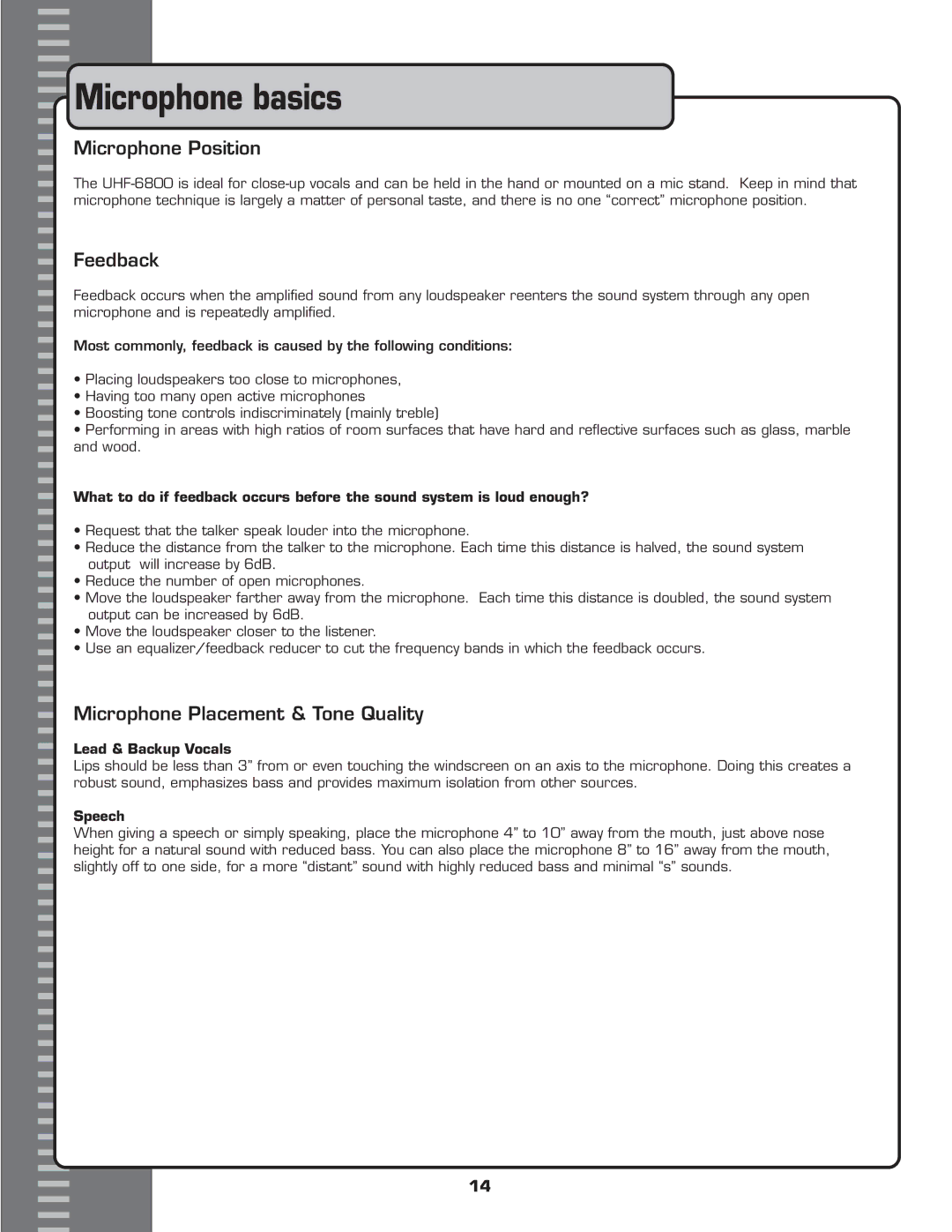
 Microphone basics
Microphone basics
 Microphone Position
Microphone Position
The
Feedback
Feedback occurs when the amplified sound from any loudspeaker reenters the sound system through any open microphone and is repeatedly amplified.
Most commonly, feedback is caused by the following conditions:
•Placing loudspeakers too close to microphones,
•Having too many open active microphones
•Boosting tone controls indiscriminately (mainly treble)
•Performing in areas with high ratios of room surfaces that have hard and reflective surfaces such as glass, marble and wood.
What to do if feedback occurs before the sound system is loud enough?
•Request that the talker speak louder into the microphone.
•Reduce the distance from the talker to the microphone. Each time this distance is halved, the sound system output will increase by 6dB.
•Reduce the number of open microphones.
•Move the loudspeaker farther away from the microphone. Each time this distance is doubled, the sound system output can be increased by 6dB.
•Move the loudspeaker closer to the listener.
•Use an equalizer/feedback reducer to cut the frequency bands in which the feedback occurs.
Microphone Placement & Tone Quality
Lead & Backup Vocals
Lips should be less than 3” from or even touching the windscreen on an axis to the microphone. Doing this creates a robust sound, emphasizes bass and provides maximum isolation from other sources.
Speech
When giving a speech or simply speaking, place the microphone 4” to 10” away from the mouth, just above nose height for a natural sound with reduced bass. You can also place the microphone 8” to 16” away from the mouth, slightly off to one side, for a more “distant” sound with highly reduced bass and minimal “s” sounds.
14
